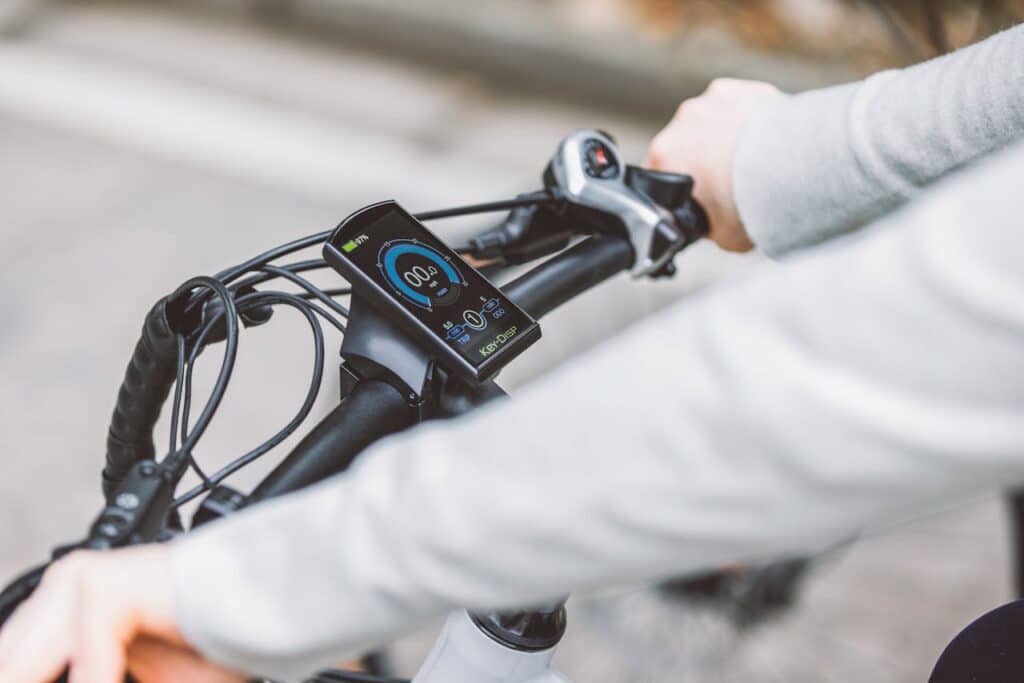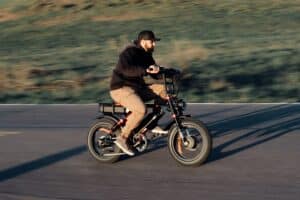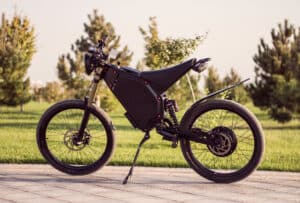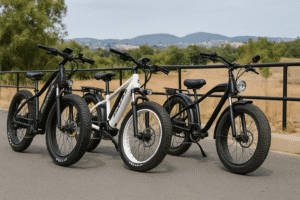E-bikes are now mainstream, with over a million sold in the U.S. in 2022. But with more riders comes more questions about maintenance, and one of the most common is how to reset an eBike controller.
A quick reset can clear error codes and keep you riding smoothly without a costly repair visit.
Key Summary:
To reset your eBike controller, turn off the bike, remove the battery, and wait 5–10 minutes. Then reconnect the battery securely and power the bike back on. This usually clears error codes, throttle glitches, and frozen displays. If issues remain, check for a hidden reset button or factory reset option in the display settings.
Why Your eBike Controller Matters
The controller is the “brain” of your electric bike—a crucial component that manages power flow from the battery to the motor and coordinates other electrical components like the throttle and display unit, and it decides how your bike responds when you use the throttle or pedal assist.
Without it, your electric bike wouldn’t know how to deliver power or when to stop.
When the controller isn’t working right, you might notice the bike acting up—like sudden power cuts, jerky movements, or nothing happening when you try to accelerate.
In many cases, this doesn’t mean the controller is broken. It might just need a reset to clear a small software bug or reconnect properly with other parts of the bike.
Taking a few minutes to reset it is a straightforward process that can often save you a trip to the repair shop.
How to Reset an eBike Controller: Step-by-Step Guide
To reset an e-bike controller:
- Turn off the eBike completely.
- Disconnect the battery from the bike.
- Wait 5–10 minutes to let any remaining charge clear out.
- Reconnect the battery and ensure all connections are tight.
- Turn the eBike back on and test the throttle and pedal assist.
- If the problem continues, check for a reset button or look in the display panel settings.
Let’s walk through each of these steps in more detail to make sure you do it safely and correctly.
Step 1 – Turn Off Your eBike
Before doing anything, fully power down your electric bike. Use the main power button, which is usually found on the display screen or on the battery itself. Wait a few seconds after switching it off to make sure the system is no longer active.
This is an important step because working on an active electrical system can lead to short circuits or other issues. Shutting everything down first keeps both you and the bike safe.
Step 2 – Disconnect the Battery
Next, carefully disconnect the battery from your eBike. This step completely cuts off the power supply to the controller and the rest of the electrical system.
Most eBikes have a lock-and-release mechanism, so you may need to use a key to unlock the battery before sliding it out or unplugging it. Always handle the battery gently and set it on a clean, dry surface while you continue the reset process.
Step 3 – Wait 5 to 10 Minutes
Now that the bike is powered off and the battery is removed, wait for at least 5 to 10 minutes. This gives the controller time to drain any leftover electrical charge.
Think of this as giving your bike a moment to “reset its brain.” Just like rebooting a frozen computer or smartphone, this short pause can help clear temporary software glitches that might be causing problems.
Step 4 – Reconnect the Battery
After waiting, it’s time to reconnect the battery. Slide or plug it back into place, and make sure it’s securely connected. If your battery locks in place, double-check that it clicks or locks properly.
Also, inspect the battery terminals and connectors—make sure there’s no dirt, moisture, or loose wires. A clean and tight connection helps your controller get the power it needs without interruptions.
Step 5 – Turn the eBike Back On
With the battery reconnected, power up your eBike. Watch the display unit for any signs of improvement, such as smoother throttle response or restored controller settings.
Check if the throttle responds, pedal assist levels are active, and whether any error codes or unusual speed readings have disappeared. If everything looks and feels normal, the reset likely fixed the issue.
Step 6 – Check for a Reset Button or Display Settings (If Needed)
If things still aren’t working right, some eBikes offer another way to reset the controller. Take a look at your controller box or display menu.
Some models have a small reset button built into the controller casing—usually hidden and labeled subtly. Others let you reset the system through the display screen, often under options like “Factory Reset” or “Default Settings.”
Check your bike’s manual if you’re not sure how to access this. A software-based reset like this can be helpful if a simple power cycle didn’t fix the problem.
Common Signs Your eBike Controller Needs a Reset
Sometimes, your eBike starts acting strangely without any obvious reason. In many cases, a quick reset of the controller can solve the problem. Here are some common signs to look out for:
- Throttle not responding – Twisting the throttle does nothing or causes jerky acceleration.
- Error codes on the display – Persistent codes like Error 21, 30, or 08 that don’t clear on their own.
- Pedal assist stops working – The motor doesn’t kick in when pedaling, even on assist mode.
- Power cuts during a ride – Sudden shut-off or inconsistent power delivery.
- Display screen glitches – Frozen screen, incorrect readings, or flashing symbols.
- Motor behaving erratically – Unexpected surges, stalling, or unusual noises.
Is It Safe to Reset an eBike Controller Yourself?
Yes, it’s generally safe to reset an eBike controller yourself as long as you follow the correct steps and take basic safety precautions.
Resetting usually involves powering off the bike, disconnecting the battery, and waiting a few minutes—nothing that involves tampering with internal electronics or complex wiring.
That said, it’s important to be careful. Always power the bike off completely and remove the battery before touching anything. If your controller or battery appears damaged, or you’re unsure about any part of the process, it’s a good idea to check your user manual or reach out to customer support.
Some eBikes also have warranty conditions that may be affected by DIY attempts, so proceed thoughtfully.
Understanding eBike Error Codes
Most eBikes display error codes when something isn’t working right. While codes can vary by brand, many follow similar patterns. Here’s a simplified table of common error codes, what they mean, and whether a reset can help:
| Error Code | Issue | What It Means | Will a Reset Help? |
| 21 | Throttle | Throttle not responding or disconnected | ✅ Often |
| 22 | Brake Sensor | Brakes stuck or sensor reading brake input | ✅ Usually |
| 23 | Motor Phase | Motor wiring fault or connection issue | ⚠️ Sometimes |
| 24 | Motor Sensor | Faulty hall sensor in motor | ⚠️ Sometimes |
| 25 | Motor Overheat Sensor | Temperature sensor issue or overheating | ❌ Rarely |
| 30 | Communication | Controller can’t talk to display or motor | ✅ Often |
| 06 | Low Battery Voltage | Battery is nearly empty or BMS is limiting power | ⚠️ Maybe |
| 07 | High Voltage | Overcharging or electrical surge | ❌ Rarely |
| 08 | Hall Sensor | Motor sensor glitch | ⚠️ Sometimes |
| 12 | Controller Overheating | Too hot to operate safely | ❌ Wait & cool down |
| 03 | Pedal Assist Sensor (PAS) | Not detecting pedaling | ✅ Often |
| 05 | Cruise Control (if available) | Throttle input conflict or sensor bug | ✅ Usually |
Tip: Always check your eBike manual for model-specific codes. Some brands use different numbering systems or display icons.
How Often Should You Reset an Electric Bike Controller?

You only need to reset your eBike controller when issues arise—like error codes, unexpected changes to parameter settings, or throttle problems—not as part of regular maintenance.
There’s no need to reset it routinely if your eBike is running fine. Most riders only reset the controller once or twice a year, or whenever they change major parts like the motor, throttle, or battery.
If you’re frequently riding in rough conditions (wet, dusty, or muddy trails), or adjusting settings often, you might find yourself needing resets a bit more often.
But in general, treat it like rebooting a phone—only reset it when there’s an issue with current settings or response delays.
Troubleshooting If the Reset Doesn’t Work
If you’ve gone through all the reset steps and your eBike still isn’t working correctly, there may be a deeper issue. Here are some things you can check:
- Battery issues – Make sure it’s fully charged and securely connected. Try swapping with a spare battery if you have one.
- Loose or damaged wiring – Inspect all visible cables from the battery, controller, throttle, and motor. Look for frayed wires, moisture buildup, or loose connections that could interfere with performance.
- Display malfunction – Sometimes the display itself causes the issue. Check for software updates or try resetting it separately if your model allows.
- Throttle or PAS sensor faults – If the bike isn’t responding to input, the sensor might be faulty. Try testing each input one at a time.
- Controller failure – If all else fails and nothing seems to help, the controller itself might be damaged and need replacement.
How to Prevent Future Controller Issues
Keeping your eBike controller in good shape starts with simple, consistent maintenance. First and foremost, always ensure your battery is fully charged, securely connected, and showing a healthy battery voltage and battery level on the display unit.
A loose or low battery can cause power delivery issues that affect how the controller functions.
Also, regularly check the wiring—especially the connections between the battery, motor, and controller. Look for any frayed wires, moisture buildup, or loose plugs.
Storing your eBike indoors and avoiding deep puddles or heavy rain can go a long way in protecting the sensitive electronics inside the controller.
Finally, give your eBike a quick inspection every few weeks. Catching small issues early, like flickering displays or weak throttle response, can prevent bigger problems down the road.
When to Call a Professional
If you’ve tried resetting the controller and your eBike still isn’t working right, it might be time to get help from a technician. Persistent error codes, complete power failure, or unusual sounds coming from the motor can all point to deeper issues that a simple reset won’t solve.
You should also reach out to a professional if your bike is under warranty. Trying to fix internal parts yourself might void coverage.
Authorized service centers have the tools to run proper diagnostics, safely replace parts, and ensure everything meets manufacturer standards.
Sometimes, getting expert help is the quickest and safest way to get back on the road, especially if you’re unsure where the problem is coming from.
Expert Tip: Don’t Forget the BMS
The Battery Management System (BMS) is another piece of the puzzle that can affect how your eBike controller behaves. It helps regulate your battery life, charge cycles, and battery voltage, and if it gets out of sync, the controller might not respond as expected, even if there’s nothing wrong with it.
In some cases, resetting the controller won’t be enough if the BMS is stuck. Disconnecting the battery and letting it sit for several minutes can also reset the BMS, restoring proper communication between the battery and controller.
So if a regular reset doesn’t work, try giving your battery a break too—it might be the fix your bike needs.
Final Words
Resetting your eBike controller is a simple, effective way to fix common issues like unresponsive throttle, error codes, or power glitches. Most of the time, turning the bike off, disconnecting the battery, and waiting a few minutes is all it takes.
To avoid future problems, keep your eBike clean and dry, check your battery and wiring regularly, and don’t forget about the BMS. If you’ve done all this and your bike still isn’t working, don’t hesitate to contact a professional.
With just a little care and the right steps, you can keep your controller—and your whole eBike—running smoothly for the long haul.
FAQs
Can I damage my eBike by resetting the controller?
Not if you follow the correct steps. Just make sure the bike is powered off and the battery is disconnected before you begin.
What happens if a reset doesn’t fix the problem?
It might be a deeper issue like a faulty battery, sensor, or wiring problem. You may need to troubleshoot further or seek professional help.
Do I need special tools to reset it?
Most resets just involve turning off the bike and unplugging the battery. Some models may use the display screen for a reset option.
Is there a reset code for all eBikes?
No, reset methods vary depending on the brand and model. Always check your user manual or manufacturer’s site for model-specific controller settings and reset instructions using the function button if available.
Does resetting delete ride history or stats?
A reset doesn’t erase your ride data unless you’re doing a full factory reset through the display panel. Always check what kind of reset you’re performing.
Michael Josh is a hands-on e-bike tester and reviewer at BoltBikers, known for putting every model through real-world rides before sharing his thoughts. With a sharp eye for performance, comfort, and build quality, he helps the team choose which bikes are worth featuring. Backed by years of experience in tech and gear reviews, Michael brings trusted, honest insights to help readers find the right e-bike for their needs.








